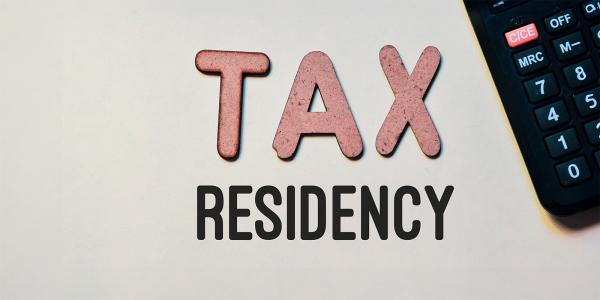The statutory residence test
The statutory residence test (SRT) determines whether you are resident in the UK under UK domestic tax law for tax years 2013/14 onwards.

Content on this page:
Structure
The SRT has three main parts:
- You will be ‘automatically’ non-resident for a year if you meet at least one of the automatic overseas tests.
- You will be ‘automatically’ resident for a year if you meet none of the automatic overseas tests and at least one of the automatic UK tests.
- If none of the automatic overseas tests or automatic UK tests applies, then you will be resident if and only if you meet the sufficient ties test. This looks at the number of days you spend in the UK and the number of ties (connections) you have to the UK.
Days in the UK
The number of days spent in the UK is an important factor, alongside others, which needs to be considered when considering your UK tax residence status.
You are normally considered to have spent a particular day in the UK if you are in the UK at midnight at the end of that day.
However, there are three exceptions to this rule:
- those with exceptional circumstances beyond their control which prevent them leaving the UK,
- those in transit, and
- for 2019/20 and 2020/21 only, those resident overseas but working in the UK on coronavirus-related activities.
For more information on these exceptions, see Visits to the UK.
For tax residence purposes, it does not matter whether short-term, repeated visits to the UK are for the same purpose, different purposes or varying lengths of time.
Automatic overseas tests
If you meet any of the automatic overseas tests, you are automatically non-resident for the tax year. This will be irrespective of whether you satisfy any of the automatic UK tests or the sufficient ties test. You should therefore consider the automatic overseas tests first.
There are four automatic overseas tests. They are set out in detail in HMRC’s guidance. Broadly, they are as follows:
- You were resident in the UK in one or more of the three previous tax years, and you spend fewer than 16 days in the UK in the tax year under consideration.
- You were resident in the UK for none of the previous three tax years, and you spend fewer than 46 days in the UK in the tax year under consideration.
- You work full-time overseas for the tax year under consideration with no ‘significant break’, you spend fewer than 91 days in the UK in the tax year, and you work for more than three hours in the UK on fewer than 31 days in the tax year.
- The fourth test is only relevant to people who die during the tax year.
It is important to look at the guidance, as it sets out the conditions in full and provides important definitions that will help you understand whether you meet the conditions.
Automatic UK tests
If you meet any of the automatic UK tests (and do not meet any of the automatic overseas tests), you are automatically resident in the UK for the tax year.
There are four automatic UK tests. Again, they are set out in detail in HMRC’s guidance. Broadly they are as follows:
- You spend 183 days or more in the UK in the tax year under consideration.
- You have a home in the UK for a period of more than 90 days, and you are present in the home on at least 30 separate days (note there are further conditions in relation to this test which you should also consider).
- You work full-time in the UK for 365 days or more with no ‘significant break’ from UK work (there are also further conditions in relation to this test). This test usually affects two or more tax years because the 365-day period will typically straddle two years.
- The fourth test is only relevant to people who die during the tax year.
It is important to look at the guidance, as it sets out the conditions in full and provides important definitions.
Sufficient ties test
If you do not meet any of the automatic overseas tests or any of the automatic UK tests for a tax year, you will need to use the sufficient ties test to determine your UK tax residence status for the tax year. The sufficient ties test looks at a combination of the number of days you spend in the UK in the tax year and the number of ties you have with the UK. You look up a table (contained in the legislation and the guidance) to determine whether the combination makes you resident in the UK for that tax year.
Which ties you may have to consider differ slightly depending on whether or not you were resident in the UK for one or more of the preceding three tax years. The ties you may need to consider are as follows:
- Family tie
- Accommodation tie
- Work tie
- 90-day tie
- Country tie (which you consider only if you were resident in one or more of the previous three tax years)
It is important to look at the guidance, as it sets out the conditions in full and provides important definitions that will help you understand whether or not you meet the conditions.
Change of circumstances
Your tax residence status can change from one tax year to the next. You should check your status each year anyway, but certainly if your situation changes. Such a change might be:
- you spend more or less time in the UK,
- you change homes in the UK,
- you change your job,
- your family moves in or out of the UK,
- your relationship status changes, or
- you have children.
Record-keeping
If you spend a lot of time travelling in and out of the UK you should keep a diary of where you are each day, and in particular, whether or not you are in the UK at midnight each day. This will enable you to consider your residence status and self-assess it, if necessary.
You may also need to need to keep a record of how many hours you spend working in the UK and overseas on any particular day, or the length of a journey within the UK, for some parts of the SRT.
There is more detailed information on record-keeping in HMRC’s manual.
More information
You can find basic information on residence status, including a tool to help you work through the statutory residence test, on GOV.UK.
There is more detailed information in HMRC’s Guidance note for residence, domicile, and the remittance basis: RDR1and Statutory Residence Test (RDR3).
Even more detailed information can be found in HMRC’s Residence, Domicile and Remittance Basis Manual.


